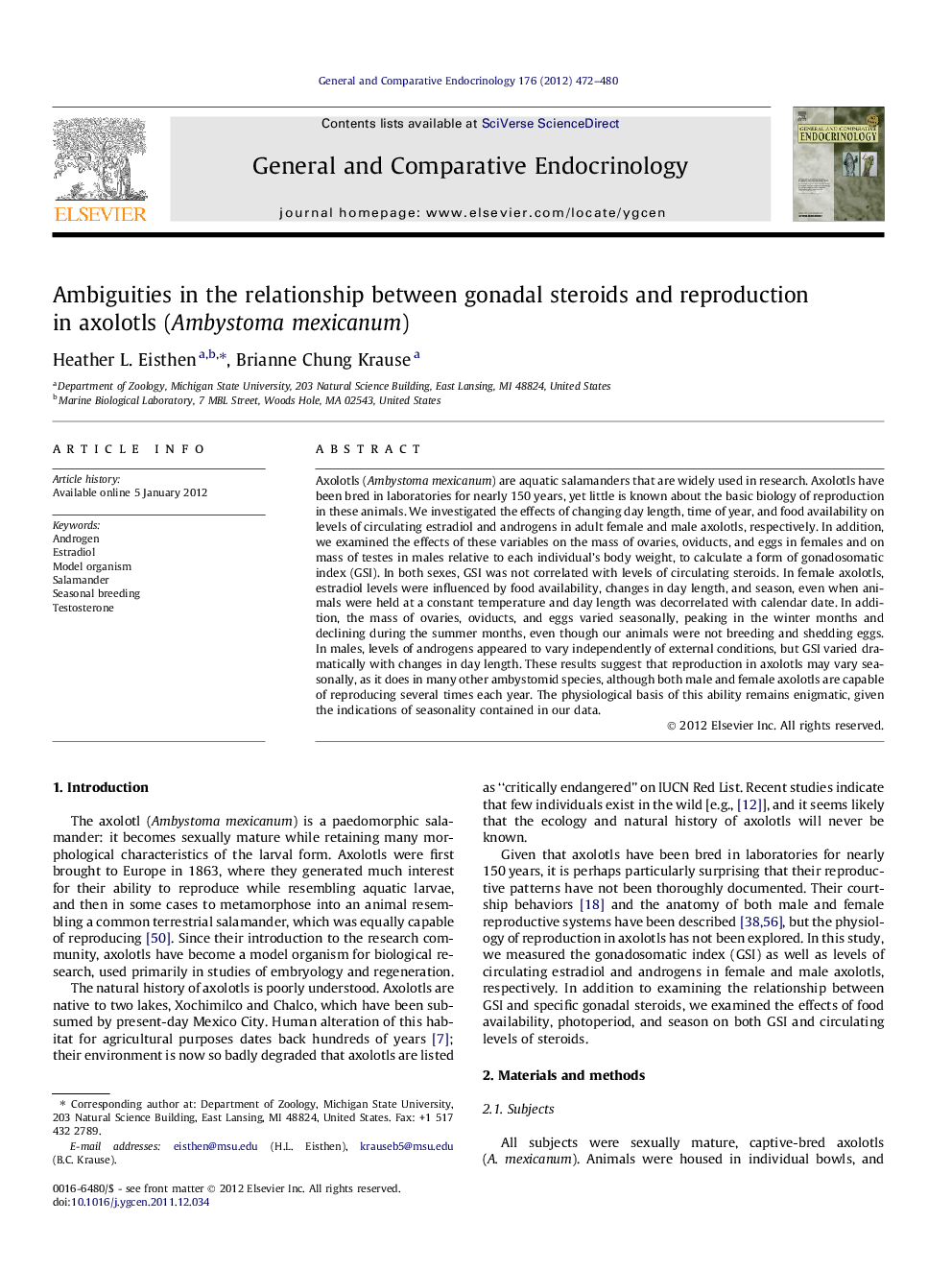| Article ID | Journal | Published Year | Pages | File Type |
|---|---|---|---|---|
| 2800594 | General and Comparative Endocrinology | 2012 | 9 Pages |
Axolotls (Ambystoma mexicanum) are aquatic salamanders that are widely used in research. Axolotls have been bred in laboratories for nearly 150 years, yet little is known about the basic biology of reproduction in these animals. We investigated the effects of changing day length, time of year, and food availability on levels of circulating estradiol and androgens in adult female and male axolotls, respectively. In addition, we examined the effects of these variables on the mass of ovaries, oviducts, and eggs in females and on mass of testes in males relative to each individual’s body weight, to calculate a form of gonadosomatic index (GSI). In both sexes, GSI was not correlated with levels of circulating steroids. In female axolotls, estradiol levels were influenced by food availability, changes in day length, and season, even when animals were held at a constant temperature and day length was decorrelated with calendar date. In addition, the mass of ovaries, oviducts, and eggs varied seasonally, peaking in the winter months and declining during the summer months, even though our animals were not breeding and shedding eggs. In males, levels of androgens appeared to vary independently of external conditions, but GSI varied dramatically with changes in day length. These results suggest that reproduction in axolotls may vary seasonally, as it does in many other ambystomid species, although both male and female axolotls are capable of reproducing several times each year. The physiological basis of this ability remains enigmatic, given the indications of seasonality contained in our data.
► We measured GSI in adult axolotls as well as circulating estradiol in females and androgens in males. ► GSI did not correlate with circulating hormone levels in either females or males. ► Estradiol levels were affected by food availability, change in day length, and time of year. ► Androgens were not affected by these factors, but changing day length altered male GSI.
